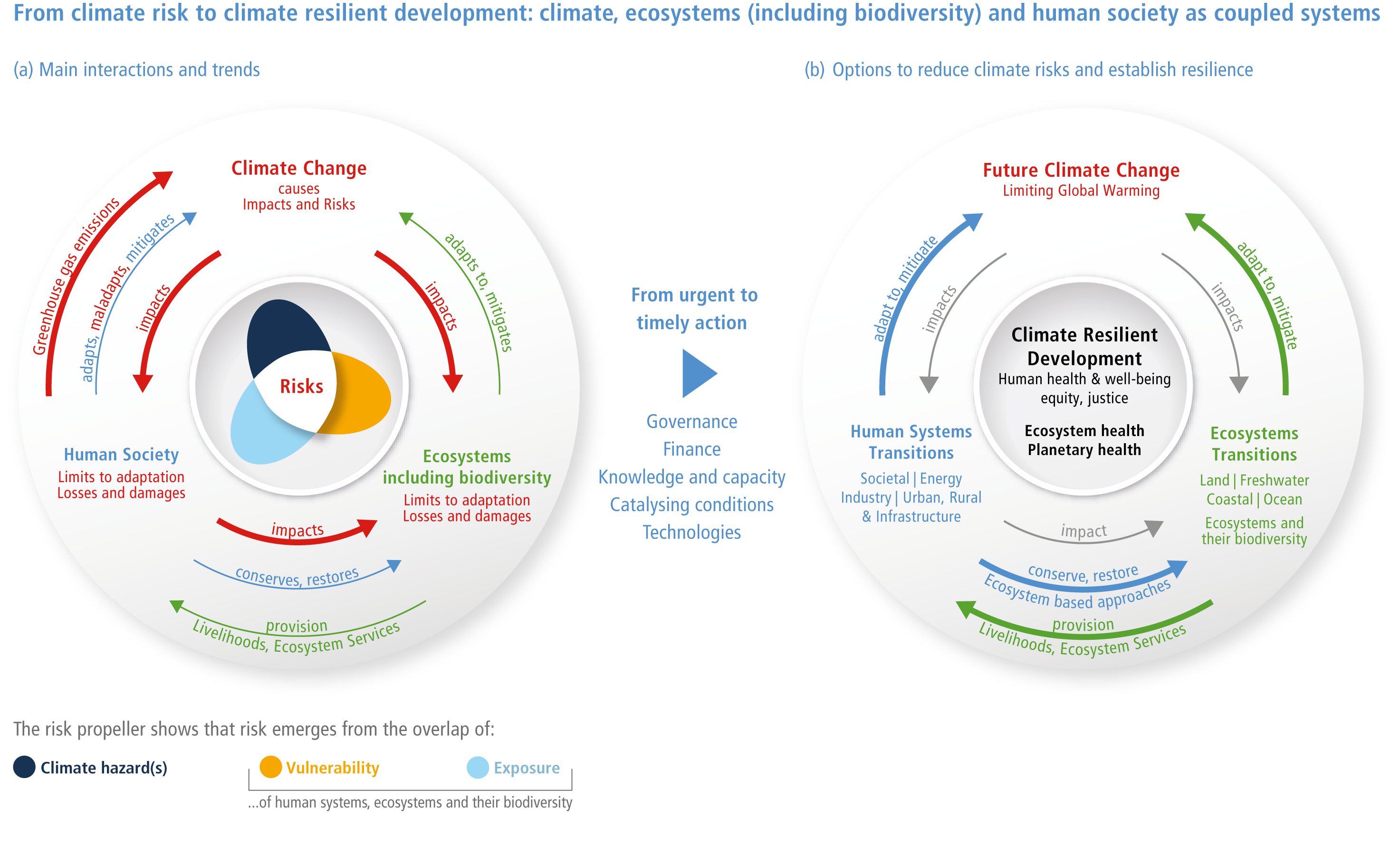Figure TS.2
Figure caption
Figure TS.2 | This report has a strong focus on the interactions among the coupled systems climate, ecosystems (including their biodiversity) and human society. These interactions are the basis of emerging risks from climate change, ecosystem degradation and biodiversity loss and, at the same time, offer opportunities for the future.
(a) Human society causes climate change. Climate change, through hazards, exposure and vulnerability generates impacts and risks that can surpass limits to adaptation and result in losses and damages. Human society can adapt to, maladapt and mitigate climate change, ecosystems can adapt and mitigate within limits. Ecosystems and their biodiversity provision livelihoods and ecosystem services. Human society impacts ecosystems and can restore and conserve them.
(b) Meeting the objectives of climate resilient development thereby supporting human, ecosystem and planetary health, as well as human well-being, requires society and ecosystems to move over (transition) to a more resilient state. The recognition of climate risks can strengthen adaptation and mitigation actions and transitions that reduce risks. Taking action is enabled by governance, finance, knowledge and capacity building, technology and catalysing conditions. Transformation entails system transitions strengthening the resilience of ecosystems and society (Section E). In a) arrow colours represent principle human society interactions (blue), ecosystem (including biodiversity) interactions (green) and the impacts of climate change and human activities, including losses and damages, under continued climate change (red). In b) arrow colours represent human system interactions (blue), ecosystem (including biodiversity) interactions (green) and reduced impacts from climate change and human activities (grey). {`{`}1.2, Figure 1.2{`}`}
